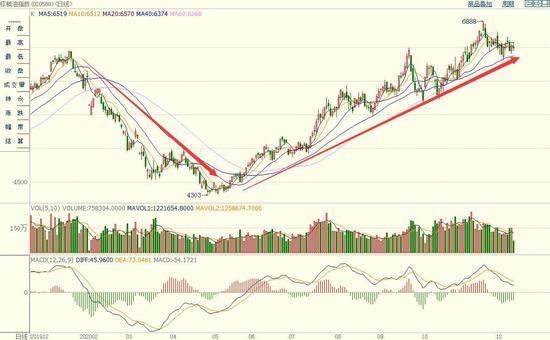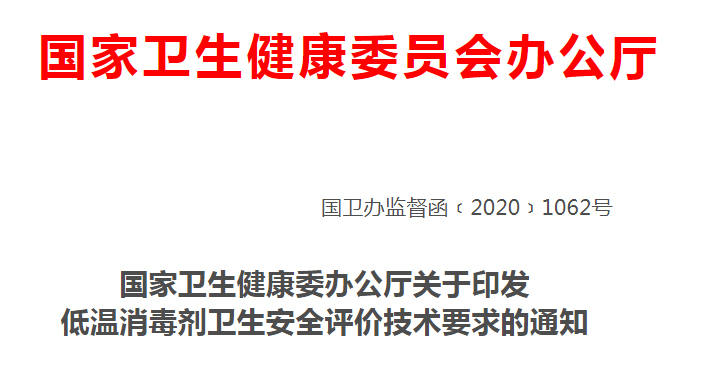Interpretation of national standards for common disinfectants
- Categories:News media
- Author:
- Origin:
- Time of issue:2021-01-25 15:27
- Views:
Interpretation of national standards for common disinfectants
- Categories:News media
- Author:
- Origin:
- Time of issue:2021-01-25 15:27
- Views:
Guide
Since the outbreak of the new coronavirus pneumonia, disinfectants have once become a product that people snapped up. "75% alcohol", "84 disinfectant", "excessive disinfection makes people uncomfortable", "so many kinds of disinfectants, how to safely kill the coronavirus" and other words appear in people's daily life.
What are the main types of disinfectants? What are the main disinfectants for the new coronavirus? How are the main indicators of the national standards for disinfectants specified? This article explains the relevant national standards for commonly used disinfectants, and the validity period specified in the standards , Comparison and analysis of microbial killing indicators, application scope, matters needing attention and other items.
1. Classification
Disinfectants are preparations used to kill microorganisms on the media to achieve disinfection or sterilization requirements. Since the main components of disinfectants are various chemicals, people often call disinfectants as "chemical disinfectants". According to the effective ingredients, it can be divided into alcohol disinfectants, chlorine disinfectants, iodine disinfectants, peroxide disinfectants, guanidine disinfectants, phenol disinfectants, quaternary ammonium salt disinfectants, etc.; can be divided by purpose It is surface disinfectant, medical device disinfectant, air disinfectant, hand disinfectant, skin disinfectant, mucous membrane disinfectant, foci disinfectant, etc.; according to the ability to kill microorganisms, it can be divided into high-level disinfectant and medium-level disinfection Agents and low-level disinfectants.
2. Interpretation of relevant national standards for commonly used disinfectants
The new type of coronavirus belongs to the β genus of coronaviruses, and its genetic characteristics are significantly different from SARSr-CoV and MERSr-CoV. It is a type of RNA virus with an envelope. When the envelope is destroyed by a disinfectant, the RNA is also easily degraded, thereby inactivating the virus. There is currently no direct data on the resistance of the new coronavirus. Based on previous understanding of the coronavirus, all classic disinfection methods should be able to kill the coronavirus.
Commonly used disinfectant products can be divided into 9 types according to their ingredients: chlorine disinfectants, peroxide disinfectants, aldehyde disinfectants, alcohol disinfectants, iodine disinfectants, phenol disinfectants, ethylene oxide, Biguanide disinfectants and quaternary ammonium salt disinfectants. The microbial killing index is the core index to measure the sterilization effect of disinfectants. The microbial killing index is to react according to the requirements of the product manual, then dilute to the dosage specified in the manual, and test according to the quantitative sterilization test method in the "Disinfection Technical Specification" (2002 Edition) of the Ministry of Health. The sterilization effect should be achieved. Extinction log value. The meaning of the log killing value is when the number of microorganisms is expressed in logarithm, it refers to the log value of the reduction of microorganisms before and after disinfection.
This article focuses on comparing the product expiration date, microbial killing indicators, application scope, precautions, etc. in national standards related to hygiene requirements such as chlorine dioxide disinfectants, guanidine disinfectants, iodine disinfectants, and quaternary ammonium salt disinfectants. For the analysis, see Table 1.

It can be seen from Table 1 that chlorine dioxide disinfectants, guanidine disinfectants, iodine-containing disinfectants, quaternary ammonium salt disinfectants, nickel-containing disinfectants, peroxide disinfectants, ethanol disinfectants, and chlorine-containing disinfectants In other sanitary requirements, the microbial killing index values are basically the same, which are mainly reflected in the killing log values of indicator bacteria (virus) strains such as Escherichia coli, Staphylococcus aureus, Pseudomonas aeruginosa, Candida albicans, and the limit The requirements are basically the same. There are special requirements for microbial killing indicators for special purposes such as medical devices.
3. Suggested usage
Combined with the comparison of the main indicators in the relevant national standards of commonly used disinfectants, it can be seen that the chemical properties of different disinfectants lead to large differences in their application scope and precautions. The following is a brief introduction to the use of several commonly used disinfectants, see Table 2.

Four, summary
At present, the main transmission route of the new coronavirus is still through respiratory droplets and contact transmission. Disinfection is only necessary when facing the threat of infectious diseases or crowd-intensive activities. When disinfecting, disinfection should be precise and scientific.
Pay attention to the following points when using common disinfectants:
(1) The validity period of different disinfectants is slightly different. Consumers need to check the product validity period in advance when using it.
(2) The scope of application of different disinfectants is different. They are mainly divided into surface disinfection of daily common objects, hands, skin, mucous membranes, air, wounds, medical operations, etc. Consumers should choose disinfectants in a targeted manner according to the objects of use.
(3) Disinfectants are chemical reagents. When using them, you need to pay attention to the possible effects when they are used at the same time with other chemical substances. For example, "84 disinfectant" is a chlorine-containing disinfectant and cannot be used at the same time with other detergents, otherwise it will increase the concentration of chlorine in the air and cause chlorine poisoning.
(4) Most disinfectants are corrosive. It is recommended to wear protective equipment such as rubber gloves when using them. In addition, it is not advisable for some communities and units to disinfect the entire body of people and vehicles. Disinfectants have a certain corrosive effect on articles, and at the same time have strong irritation to human mucosa and skin.
(5) When different disinfectants or the same disinfectant are applied to different objects, the use concentration is slightly different. Consumers should refer to the concentration requirements in the manual when using it. During the anti-epidemic period of the new coronavirus, disinfectants should be used reasonably to avoid excessive disinfection, especially to avoid ecological imbalance caused by excessive outdoor disinfection and environmental pollution caused by residual disinfectants.
(6) For crowded places, such as public transportation, elevators, office spaces, meeting rooms, hotels, supermarkets, restaurants, etc., when there are no patients or suspected infections, the main focus is to strengthen cleaning, and opponents often contact The key parts of the virus should be disinfected every day.
references
[1] "Guidelines for the Use of Disinfectants" issued by the General Office of the National Health Commission in February 2020
[2] GB/T 26373-2010 "Sanitary Standards for Ethanol Disinfectants"
[3] GB/T 36758-2018 "Sanitary Requirements for Chlorine Disinfectants"
[4] GB/T 26366-2010 "Sanitary Standard of Chlorine Dioxide Disinfectant"
[5] GB/T 26371-2010 "Hygienic Standard for Peroxide Disinfectants"
[6] GB/T 26368-2010 "Sanitary Standard for Iodine-containing Disinfectants"
[7] GB/T 26370-2010 "Sanitary Standards for Bromine-containing Disinfectants"
[8] GB/T 27947-2011 "Sanitary Requirements for Phenolic Disinfectants"
[9] GB/T 26369-2010 "Sanitary Standard for Quaternary Ammonium Disinfectants"
[10] GB/T 26367-2010 "Sanitary Requirements for Guanidine Disinfectants"
[11] GB/T 27952-2011 "Sanitary Requirements of Surface Disinfectants for Common Objects"
[12] GB/T 27953-2011 "Sanitary Requirements for Disinfectants in Epidemic Sites"
Information source: China Detergent Industry Information Network
更多新闻
Contact
CopyRight © Dongguan weland industrial co., LTD 粤ICP备11089336号 By : www.300.cn

 (0769)88886988
(0769)88886988











